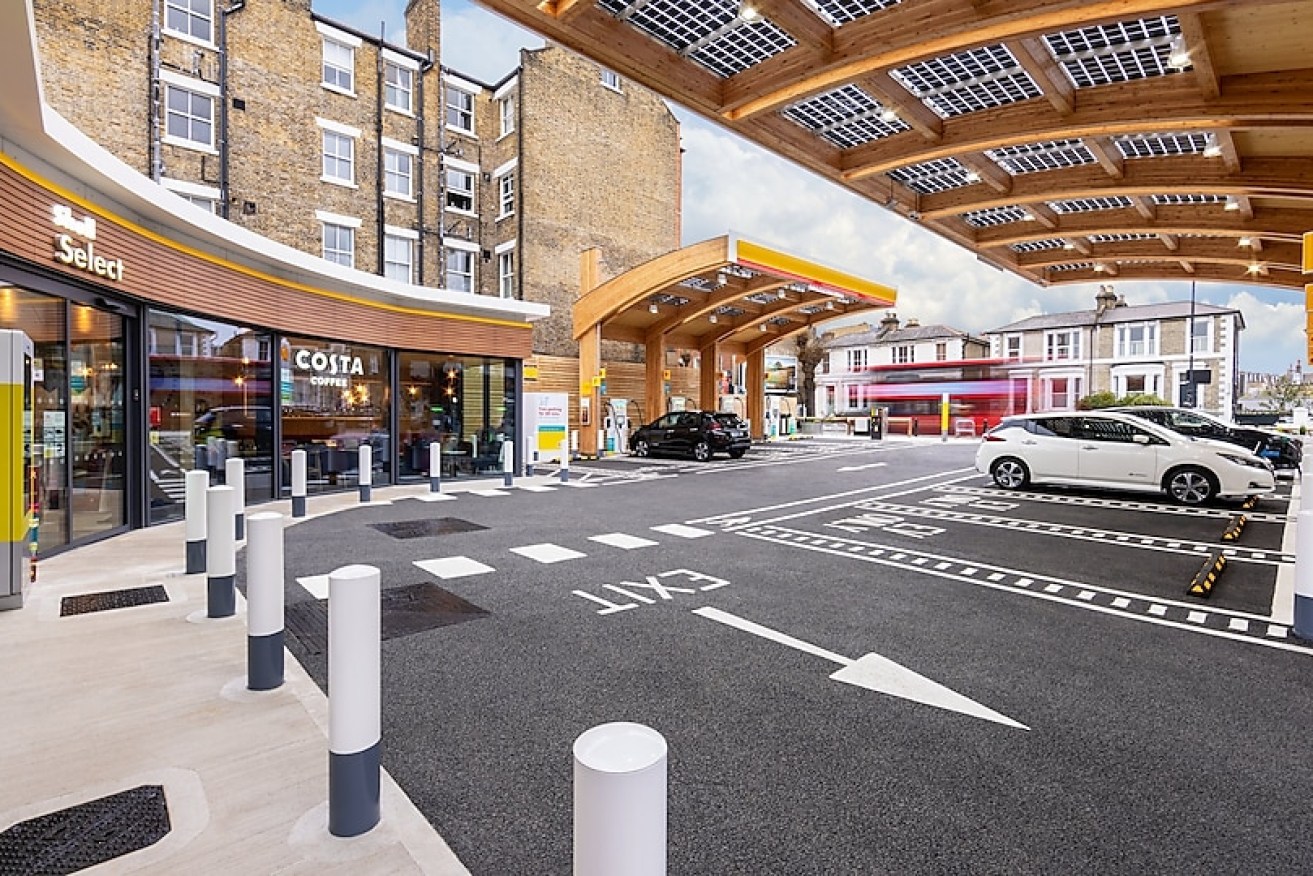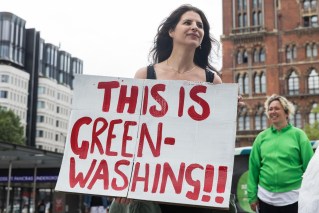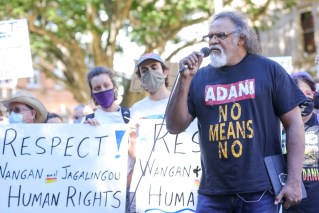More flash, less dash: Humble servo to get extreme makeover
Forget filling the tank, grabbing a coffee and driving away – petrol stations will undergo a major change over the coming years, becoming places to hang out and recharge rather than simply fill up and go.

Fuel company Shell recently opened an EV charging service stations in London's Fulham. (Image: supplied)
The stations will change radically over the next decade, adding more cafes, restaurants, shops and places to hang out and “watch YouTube” while your car recharges, the All-Energy Conference in Melbourne heard on Thursday.
An Ampol executive also warned many city and suburban service stations would close during the transition, while others in regional areas were likely to thrive.
The predictions come after research estimated as many as 80 per cent of service stations could be unprofitable by 2035, in a change fuelled by the growing popularity of electric cars.
Ampol technology manager Darius Salgo told the conference the humble servo would be forced to undertake an extreme makeover in the coming years as Aussies replaced their petrol vehicles.
“You’re going to see a transformation around what you do there because you’re going to be there for longer,” Salgo said.
“It might take three, four minutes to fill up with fuel now and you don’t really want to be there – it’s a bit smelly.
“At the service station of the future, you’re going to have to be there for maybe 20 or 30 minutes.
“You might want to have a nice coffee, muffin, or you’re going to be sitting in your car watching YouTube. We need to make them nicer, is the short story.”
He said service stations would still play an important role in powering Australian vehicles, but their locations could change.
Salgo said service stations with EV chargers would be crucial in regional areas for those on long journeys, but fewer may be needed in urban or suburban areas, where drivers had greater access to charge at home.
“We’re going to need less of them,” he said.
“We’ll need them to be in much more strategic locations.”
Petrol stations have already begun part of their electric transformation in Australia, with Ampol testing its AmpCharge charging technology in five service stations in Brisbane, Sydney, Melbourne and Perth.
The energy giant planned to introduce the technology to 120 locations, in a project co-funded by the Australian Renewable Energy Agency.
BP also unveiled its first Australian electric vehicle charging station in Melbourne last week, with “just under 1000” charging bays planned as part of a project with Tritium.
Rival Shell plans to operate more than 500,000 EV charging points worldwide by 2025.
Analysts at Boston Consulting Group estimated as many as 80 per cent of petrol stations could be unprofitable by 2035 as motorists switch to electric vehicles.
But Everty chief executive Carola Jonas said consumers would benefit if petrol stations did make the switch to electric car charging because they could provide reliable, well-maintained equipment in important locations.
“There’s nothing more frustrating for an EV driver than to rock up to a charger and find it’s not working,” she said.
“Customers and drivers need a great experience.”












